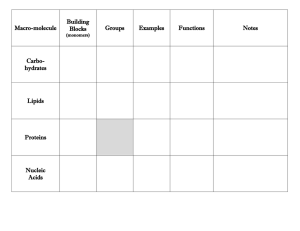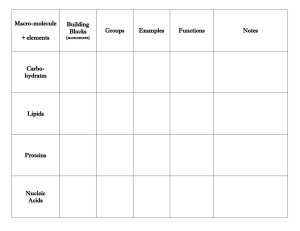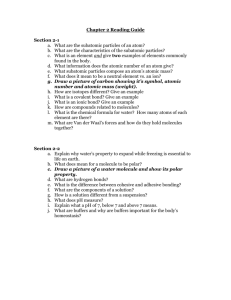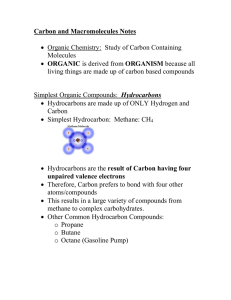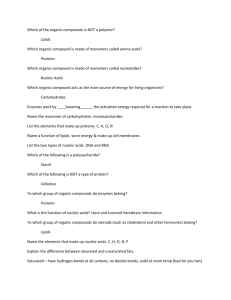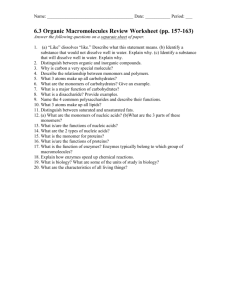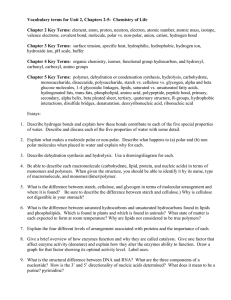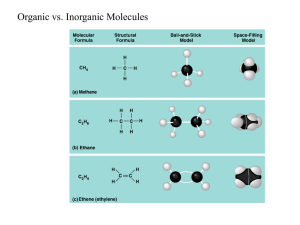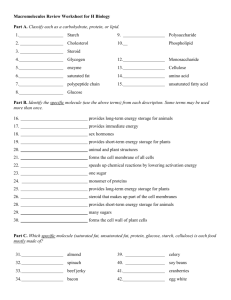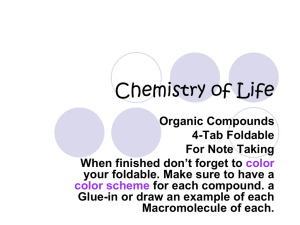Building Blocks Carbo-
advertisement
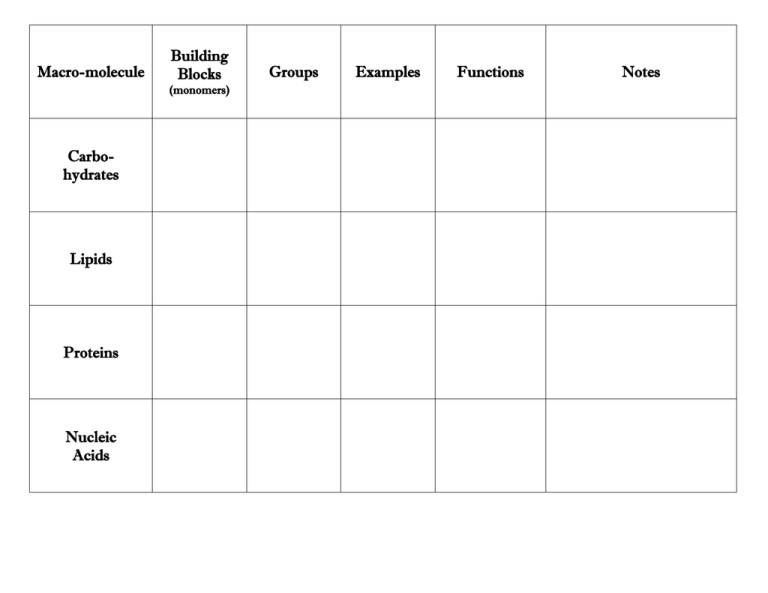
Macro-molecule Building Blocks (monomers) Carbohydrates Lipids Proteins Nucleic Acids Groups Examples Functions Notes Macro-molecule Building Blocks Groups Examples Functions Notes (monomers) mono-: glucose fructose galactose Carbohydrates monosaccharides (simple sugars) monodipolysaccharides di-: sucrose maltose lactose poly-: starch, cellulose, glycogen Lipids Proteins Nucleic Acids 3 fatty acids + glycerol (3C) phosphate, sugar, nitrogen base poly-: starch; food storage-plants cellulose: plant support glycogen: food storageanimals triglycerides (simple lipids) nutrition phospholipids cell membrane cholesterol cholesterol derivatives like hormones sucrase enzymatic transmembrane cell membrane insulin messengers antibodies immunity muscles, hair, skin, fingernails structural amino acids nucleotides: mono-, di-: Energy source deoxyribonucleic acid (DNA) and ribonucleic acid (RNA) control of the cell heredity messenger (mRNA) organizer (rRNA) translator(tRNA) bond: or glycosidic linkage between sugar monomers. linkages between monomers in starch, linkages in cellulose. Enzymes specific for catalyzing the breakdown of linkages are ineffective on linkages. Humans cannot digest wood or the fibers in celery or whole grain. This fiber acts as “roughage” stimulating the intestine to secrete mucus to promote regular bowel movements. bond: ester linkage between each fatty acid and the glycerol. bond: peptide bond between carboxyl and amino group of 2 amino acids. bond: phosphodiester between phosphate and sugar Bacterial DNA has a main chromosome plus circular DNA called plasmids 10 nucleotides per turn A=T(U); C=G
